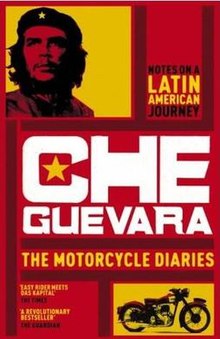On Wednesday 4th June,1997, two days after I left office as Lord Mayor of Belfast, I flew from Belfast to Seattle. Kevin McBride recognised me and I got an upgrade to Business Class, which was very helpful as I was embarking on a journey of a lifetime to the High Andes in Peru and the Amazon River Basin in search of Che Guevara. On Friday 6th June , with my sister Isabel and her husband Earl, accompanied by their Entomological Professorial friends, I flew on Continental Airlines to Houston ,Texas and on to Lima, Peru. The following day we had a discussion at the home of Francisco Miró Quesada Cantuarias (born 21 December 1918 in Lima) a Peruvian philosopher who disputes the summary of human nature on the basis that any collective assumption of human nature would be unfulfilling and leave the public with a negative result. He made his debut in 1941 with Sentido del movimiento fenomenológico (Meaning of the phenomenological movement).
The term paraconsistent logic was coined by Miró Quesada at the Third Latin America Conference on Mathematical Logic in 1976. After Miró Quesada graduated from the University of San Marcos with a doctorate in Philosophy, he began teaching there as a professor of Contemporary Philosophy. Later, in 1952, he was granted a scholarship by UNESCO to go to France, Italy, and England to study the formation of the secondary teaching staff. In 1953, he published the Sunday Supplement (el Suplemento Dominical). Francisco was considered one of the finest intellectuals in South America. He was most interested in my own work and the difficulties I had experienced with the reactionary Irish academia here.
Following visits to archaeological sites in Lima, we travelled through the High Andes, staying with the Quechua people and arriving at the Colca Canyon to see the Condor fly. We then travelled on to Arequipa and Cusco, Machu Picchu, the Lost City of the Inca, and the Amazon Basin. The hospitality we received from the Quechua was unforgettable. They once gave us the potato (Quechua papa ), which the persecuted Presbyterian Ulster-Scots (Scotch Irish) later gave back to North America. The potato was first domesticated in the region of modern-day southern Peru between 8000 and 5000 BC. It has since spread around the world and become a staple crop in many countries. The earliest archaeologically verified potato tuber remains have been found at the coastal site of Ancon (central Peru), dating to 2500 BC.
Ernesto Guevara spent long periods traveling around Latin America during his studies of medicine, beginning in 1948, at the University of Buenos Aires. In January 1952, Guevara, then a 23-year-old medical student, and his friend Alberto Granado, a 29-year-old biochemist, set out on their journey and The Motorcycle Diaries is his memoir of what happened. Leaving Buenos Aires, on the back of a sputtering single cylinder 1939 Norton 500cc dubbed La Poderosa (“The Mighty One”), they desired to explore the South America they only knew from books. During the formative odyssey Guevara is transformed by witnessing the social injustices of exploited mine workers, persecuted socialists, ostracized lepers, and the tattered descendants of a once-great Inca civilisation. By journey’s end they had travelled for a symbolic nine months by motorcycle, steamship, raft, horse, bus, and hitchhiking, covering more than 8,000 kilometres (5,000 mi) across places such as the Andes, Atacama Desert and the Amazon River Basin. The diary ends with a declaration by Guevara, born into an upper-middle-class family, and descended from the ancient British aristocracy of Dalaradia in Ulster, displaying his willingness to fight and die for the cause of the poor, and his dream of seeing a united Latin America.
“This isn’t a tale of derring-do, nor is it merely some kind of ‘cynical account’; it isn’t meant to be, at least. It’s a chunk of two lives running parallel for a while, with common aspirations and similar dreams. In nine months a man can think a lot of thoughts, from the height of philosophical conjecture to the most abject longing for a bowl of soup – in perfect harmony with the state of his stomach. And if, at the same time, he’s a bit of an adventurer, he could have experiences which might interest other people and his random account would read something like this diary.”
—Diary introduction
The trip was carried out in the face of some opposition by Guevara’s parents, who knew that their son was both a severe asthmatic and a medical student close to completing his studies. However, Granado, himself a doctor, assuaged their concerns by guaranteeing that Guevara would return to finish his degree (which he ultimately did).In Peru, Guevara was impressed by the old Inca civilisation, forced to ride in trucks with Indians and animals after “The Mighty One” broke down. As a result he began to develop a fraternity with the indigenous campesinos. In March 1952 they both arrived at the Peruvian Tacna. After a discussion about the poverty in the region, Guevara referred in his notes to the words of Cuban poet José Marti: “I want to link my destiny to that of the poor of this world.” In May they arrived in Lima and during this time Guevara met doctor Hugo Pesce, a Peruvian scientist, director of the national leprosy program, and an important local socialist. They discussed several nights until the early morning and years later Che identified these conversations as being very important for his evolution in attitude towards life and society. Surely Guevara was a true son of Columbanus, the Patron Saint of Motorcyclists.

